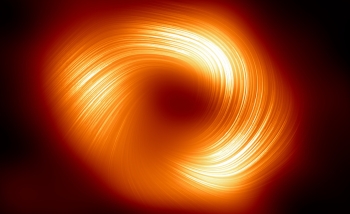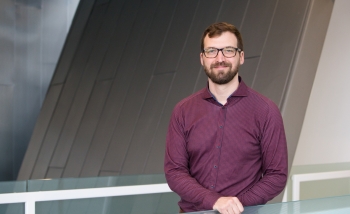When people talk about Perimeter, they often mention the Institute’s age: our doors have been open for less than 20 years. I get it. Compared to peers like the Institute for Advanced Study (founded in 1930) or Stanford (1885) or even Cambridge (1209), Perimeter is very young and many have found our rapid rise onto the world stage of science surprising.
But I think it’s important to balance the “young Perimeter” story with another one: in the world of theoretical physics, 20 years is a long time. It’s astonishing how much of the research conducted at Perimeter today would have been impossible, even unthinkable, 20 or 10 or even five years ago.
For instance, I think the intersection of computers and physics, featured in this issue, is richer and more surprising than anyone foresaw. The machine learning conference featured shows how ideas from computer science and information theory are informing physics. The work on causal inference shows how ideas from quantum foundations are informing information science. In other words, the intersection goes both ways. Meanwhile, fields like cosmology – once a data-starved science that sometimes stumbled in the dark – are now swimming in data, even at times overwhelmed by data. Computational scientists like Kendrick Smith and Dustin Lang are bringing the field into focus.
Perimeter is built to be a place where this new kind of work can thrive. We deliberately choose to take diverse – even contrasting – approaches to fundamental problems. We believe that interesting things happen at intersections, and we do everything we can to make it easy for our researchers to talk across fields, to communicate from one area to another, to build diverse collaborations. We don’t worry too much about where the boundaries between subfields are. We just walk right through them.
Take the new Perimeter Institute Quantum Information Lab (PIQuIL). PIQuIL is a new venture that joins researchers with students, industry, and government partners in a truly exciting mash-up at the intersection of artificial intelligence and quantum computing. Or, take the story on the latest discoveries from the CHIME telescope. Several years ago, Kendrick Smith, who holds the Daniel Family James Peebles Chair, basically spent a year reworking the data pipeline for the CHIME experiment. This made the telescope vastly more efficient and brought new problems into reach. That done, Kendrick led a Perimeter team in developing new mathematical techniques that enabled CHIME to conduct a new real-time, needle-in-a-haystack search needed to capture fast radio bursts, mysterious energetic pulses of radio-frequency light originating in deep space.
At a university, a young faculty member like Kendrick might have felt the pressure to publish fresh data analysis, rather than spending a year reworking software and inventing new analysis methods. Instead, we say to our young faculty members: don’t think about publication rates and citation numbers. Think about how you can really have an impact.
In my new role as Perimeter’s director, I’m frequently asked what all the work we do is good for. When I field this question, I’m reminded of J.J. Thomson. In 1897, Thomson discovered the electron, which at the time was of no use whatsoever – so much so that he once memorably made a toast to “the useless electron.” In 1934, in the teeth of the Great Depression, when people were calling for a halt to basic research and a focus on immediate problems, Thomson reminded people that his discovery had turned out to be pretty useful (after all, it’s the foundation of electronics). He said, “Any new discovery contains the germ of a new industry.”
If I were to guess what impact today’s fundamental research will have on the future, I’d be wrong – even comically wrong – because predicting the impact of fundamental physics always falls short of reality. The big discoveries literally transform the world around us.
It is vitally important that we do daring research into uncharted places. Why? Because if we focus only on immediate problems, we will never move past the horizon set by those problems. The horizon of our imaginations is so much bigger than that. The horizon of what is possible is bigger still – and moving fast. Here’s to our new horizons.
– Robert Myers, Perimeter Director and BMO Financial Group Isaac Newton Chair
About PI
Perimeter Institute is the world’s largest research hub devoted to theoretical physics. The independent Institute was founded in 1999 to foster breakthroughs in the fundamental understanding of our universe, from the smallest particles to the entire cosmos. Research at Perimeter is motivated by the understanding that fundamental science advances human knowledge and catalyzes innovation, and that today’s theoretical physics is tomorrow’s technology. Located in the Region of Waterloo, the not-for-profit Institute is a unique public-private endeavour, including the Governments of Ontario and Canada, that enables cutting-edge research, trains the next generation of scientific pioneers, and shares the power of physics through award-winning educational outreach and public engagement.
You might be interested in


Why we have not discovered dark matter: A theorist's apology | Public Lecture
February 1, 2024
